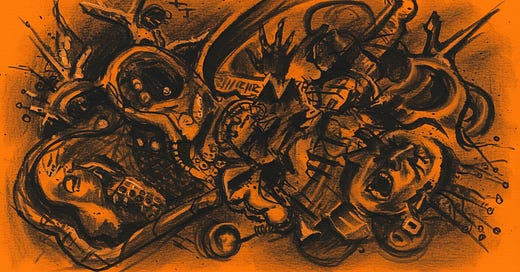From Photography to AI, AI tools are dividing us just like photography once did. Creators fear they will lose their art. Philosophers doubt truth and debate human creativity. And yet, photography became something greater. Will AI?
This morning, my LinkedIn feed felt like stepping into a digital battleground. The cause? An experimental AI-driven GQ spread featuring Timothée Chalamet. Reactions ranged from awe to outright anger.
It got me thinking: Why do new technologies often evoke such strong, emotional responses? Personally, I’m an optimist when it comes to these tools, and I’ve often said, “AI doesn’t replace creativity, it accelerates it.” But this controversy reminded me of something deeper, something from history.
When photography was invented in the 1830s, it too was met with shock, fear, and debates about its impact on art, memory, and even our souls. Yet today, we look back and see photography’s transformation from a feared technology into one of humanity’s greatest creative tools. Could AI tools be on a similar path?
Connection to History
When photography first emerged in 1839, reactions were not unlike today’s debates around AI. Crowds were amazed by the daguerreotype, calling it a “mirror with a memory.” Some saw it as almost magical. It was a way to freeze time itself. But others weren’t so quick to embrace it.
Paul Delaroche, a French painter, allegedly declared, “From today, painting is dead!” Art critics like Charles Baudelaire were outright hostile, calling photography “art’s most mortal enemy.” There was even religious debate. While some Christian groups welcomed photography’s ability to preserve sacred moments, others raised concerns about pride or vanity. In parts of the Islamic world, scholars debated whether capturing human likenesses was haram or allowed.
For something as simple as a photograph, the reactions were anything but simple.
Core Argument
But history teaches us something fascinating: skepticism is only part of the story. Over time, photography overcame many of these fears and found its place as both a tool for documentation and a medium for creativity.
In fact, what was once seen as a threat to art became an inspiration for it. Julia Margaret Cameron, a photographer from the 1860s, defied critics by using her camera to create poetic, dreamlike images. Instead of competing with painting, photography carved out its own domain, forever expanding the boundaries of art.
Today, we see photography as inseparable from daily life. We leverage it in our social media snapshots, professional work, or fine art exhibitions. What started as a divisive new technology evolved into something that amplifies human creativity.
Could AI tools take a similar path? Like photography, they don’t have to erase our creativity. AI can enhance it, helping us create and share in ways we’ve never imagined before.
Acknowledging Concerns
Of course, skepticism about AI tools isn’t unwarranted. Just like with photography, there are questions worth asking: Are we losing something human in the process? Could AI erode authenticity or creativity in the long run?
This isn’t a black-and-white debate. When photography debuted, people worried it would kill art, strip memories of meaning, and distort reality. Charles Baudelaire even argued it pandered to the masses’ love of exactness, leaving no room for imagination.
But history has shown us that these fears, while understandable, often miss a deeper truth: technology doesn’t erase humanity. It evolves alongside it. Just as photography empowered people to document their worlds, AI has the potential to amplify our ideas and creativity if we choose to use it wisely.
Acknowledging the concerns isn’t about declaring AI “good” or “bad.” It’s about recognizing that humanity has faced these same debates before. And, it has come out stronger, more creative, and more connected than ever.
Call for Balance
So, where does this leave us with AI? If history has taught us anything, it’s that the story of new technology is rarely simple. Just like photography, AI will have its critics and its champions. It will spark creativity and controversy and may take time to find its place in society.
But perhaps, instead of seeing technology as a replacement for human creativity, we can see it as something that enhances it. As I’ve said before, “This approach doesn’t replace creativity, it accelerates it.”
The choice is ours: we can either focus on what AI might take away or, like Julia Margaret Cameron with her camera, we can ask how it can expand what’s possible. After all, every new tool in history—from the paintbrush to the camera to AI—was created to serve our imagination, not replace it.
What do you think? Are we in another “photography moment”—balanced between fear and opportunity? Let’s keep the conversation going.



